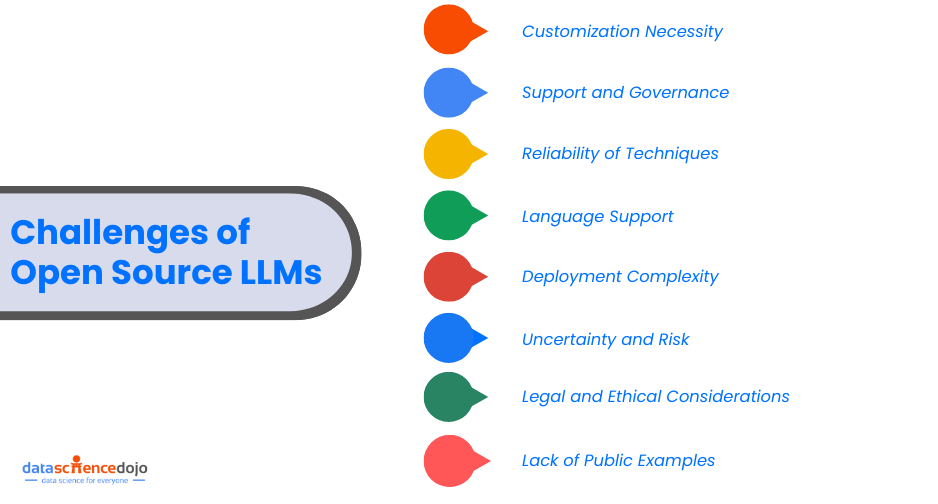The Power of Open Source Generative AI and Large Language Models
Open source large language models are at the forefront of the generative AI revolution. As these models become more powerful, efficient, and accessible, they will drive innovation across industries and improve everyday lives. However, addressing ethical concerns, ensuring fairness, and building sustainable AI systems will require collaboration and commitment from developers, researchers, and policymakers. Here’s a quick look at the current landscape with respect to these technologies.
Generative AI and Large Language Models
Generative AI has emerged as one of the most transformative technologies in recent years, dramatically reshaping industries and changing how businesses, developers, and individuals interact with machines. At the heart of generative AI is the large language model (LLM), which powers a wide range of applications, from content generation and chatbots to personalized virtual assistants, and even image and video creation. The rise of open source LLMs has further accelerated this revolution, making powerful AI tools more accessible to everyone, from individual developers to large enterprises.
Understanding Large Language Models
LLMs are neural networks trained to predict the next word or sequence of words in a text based on the context they’ve already seen. This ability to predict subsequent words allows LLMs to generate coherent, contextually accurate sentences, paragraphs, and even entire documents. The training process involves feeding a model vast amounts of text data, which it uses to identify patterns, relationships, and structures in language.

The Transformer Architecture
LLMs are based on a neural architecture called the Transformer, introduced by Vaswani et al. in 2017 in a groundbreaking paper, ‘Attention Is All You Need’. The Transformer architecture leverages the attention mechanism, which allows the model to weigh the importance of different words or tokens in a sequence. The LLM ecosystem has grown rapidly, with both proprietary and open source models making significant strides in performance and capability.
Notable Large Language Models
Some of the most notable LLMs include:
- GPT-3: Developed by OpenAI, GPT-3 is one of the most well-known LLMs with 175 billion parameters. It is capable of understanding and generating human-like responses in natural language.
- GPT-J: An open source alternative to GPT-3, developed by EleutherAI, trained on 6 billion parameters.
- GPT-Neo: Another model from EleutherAI, designed to provide an open source alternative to GPT-3 with various sizes.
- Llama: Developed by Meta (formerly Facebook), a family of open source LLMs ranging from small to large models.
Fine-Tuning Large Language Models
Fine-tuning is an essential aspect of working with open source LLMs. It allows developers to achieve better performance in targeted use cases. Best practices for fine-tuning open source LLMs include using pre-trained models, selecting clean and relevant datasets, experimenting with hyperparameters, mitigating overfitting, and continuously evaluating performance.
Tools for Fine-Tuning
Tools for fine-tuning open source LLMs include Hugging Face, TensorFlow, PyTorch, and DeepSpeed, each offering unique capabilities for developers to train and fine-tune models efficiently.
Applications of Large Language Models
The applications of LLMs powered by open source frameworks have rapidly expanded across numerous fields, from content generation and conversational AI to image and video generation. These models have fundamentally changed how AI can be leveraged to tackle real-world challenges, automate tasks, and enhance creativity.

Ethical Considerations
As the capabilities of open source LLMs continue to grow, ethical considerations surrounding their development and deployment become more critical. While these models offer transformative possibilities, they also come with significant ethical risks related to bias, misinformation, intellectual property, and responsible usage.




















